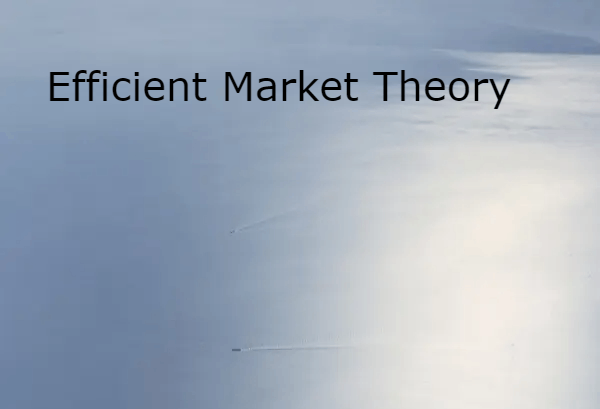Efficient Market Theory is developed by the University of Chicago professor Eugen Fama in the 1960s. As per this theory , at any given time, all available prices sensitive information fully reflected in the securities’ prices .
Thus, this theory implies that no investor can consistently outperform the market as every stock is appropriately prices based on available information.
This theory is also known as ‘Efficient Market Hypothesis” (EMH). Further, stating otherwise theory states that no one can “beat the market” hence making it impossible for investors to either purchase undervalued stocks or sell stocks for inflated prices as stocks are always traded at their fair value on stock exchanges.
Hence, it is impossible to outperform the overall market through expert stock selection or market timing that the only way an investor can possibly obtain higher returns by purchasing risky investments.
According to this theory an investor can only earn high returns by taking more significant risks in the market .
What are the assumptions of efficient market theory?
Efficient Market Theory are based on following assumption:
- Theory assumes that market value of stocks represents all relevant information.
- Stocks are traded at their fair value on stock exchanges.
- It also assumes that investors are not capable of outperforming the market since they have to make decisions based on same available information.
What are the types of efficient market theory?
Efficient Market Theory has three variations which constitutes different market efficient theory.
1. Weak form of EMH
According to the weak form of efficient market theory current prices of stock reflect all information found in the record of past prices and volumes. This means there is no relationship between the past and future prices movements.
Further, 3 types of tests have been employed to empirically verify the weak form of EMH market theory serial correlation test, run test and filter rule test.
a) Serial correlation test:
To test for randomness in stock prices changes , one has to look at serial correlation. For this purpose , price change in one period has to be correlated with the price change in some other period. Price changes are considered to be serially independent.
b) Run Test:
Given series of stock price changes each price change is designed + if it represents an increase and – if it represents a decrease. The resulting series may be -,+,-,-,-,+,+.
Run occurs when there is no difference between the sign of two changes . When sign of change differs , the run ends and new runs begin.
++/- – -/+/ -/ + /- – + +/- – – / +/- /+ /- -.
c) Filter Rules Test:
f the price of stock increases by at least N% buy and hold it until its price decreases by at least N% from a subsequent high. When the price decreases at least N% or more, sell it.
If the behavior of stock price changes is random, filter rules should not apply in such a buy
and hold strategy. By and large, studies suggest that filter rules do not out perform a single buy and hold strategy particular after considering commission on transaction.
Semi-strong Efficient Market Theory
Semi-strong form efficient market theory holds that stock prices adjust rapidly to all publicly
available information.
And, this recognizes that market prices make rapid adjustments in response to any new public information that is disclosed. Therefore, there is no scope for both technical and fundamental analysis.
Strong form of Efficient Market Theory
According to the Efficient Market Theory, all available information, public or private, is reflected in the stock prices. This represents an extreme hypothesis.
Efficient Market Theory state that the market prices of securities shows both historical and current information. And includes internal information as well as publicly disclosed information.
Further, it recommends that the price reflects information available only to board members or the CEO of a company.
What are the limitations of efficient market theory?
- Information Inadequacy :
Information is neither freely available nor rapidly transmitted to all participants in the stock market. There is a calculated attempt by many companies to circulate misinformation.
- Limited Information processing capabilities:
Human information processing capabilities are sharply limited . Accordingly to Herbert Simon every human organism lives in an environment which generates millions of new bits of information every second but the bottle necks of the perpetual apparatus does not admit more than thousand bits per seconds and possibly much less.
- Irrational Behavior
It is generally believed that investors’ rationality will ensure a close correspondence between market prices and intrinsic values. But in practice this is not true.
The market seems to function largely on hit or miss tactics rather than on the basis of informed beliefs about the long term prospects of individual enterprises.
- Monopolistic Influence:
A market is regarded as highly competitive . No single buyer or seller is supposed to have undue influence over prices. In practice , powerful intuition and big operators wield grate influence over the market . Monopolistic power enjoyed by them diminishes the competitiveness of the market .



